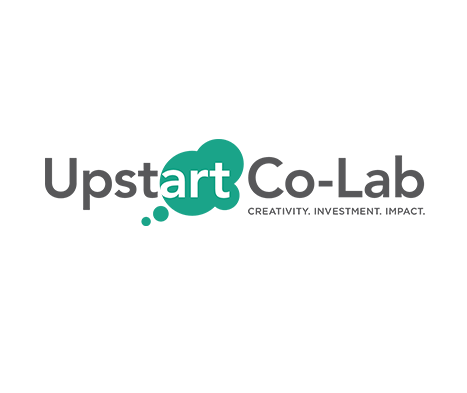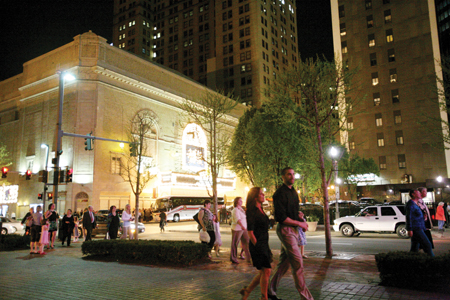A Deep Dive Into Impact Investing in the Creative Economy
The creative economy in communities across the United States is ripe for impact investment—but where should funders start? As outlined in Callanan’s article, Upstart Co-Lab views the arts “as a way to tackle sustainability, to make communities strong and vibrant, as a rich source of new business ideas and quality jobs, as a money-making and do-gooding proposition.” There is a clear role for artists to play as social entrepreneurs, community leaders, asset builders, and job creators as part of the booming creative economy. This includes a focus on art, culture, entertainment, media, and innovation, within innovative businesses in fashion, culinary arts, architecture, game design, industrial design, and much more.
While philanthropy has a key role to play in continuing to encourage growth in the creative economy - “the sort of job-creating, wealth-building business activity that naturally occurs in creative places” - arts funders have not yet connected with impact investors to engage their capital and scale a creative sector that is inclusive and equitable. But there is a significant pool of capital to tap into. According to Foundation Center’s aggregate data made available at the time of the original article, “the arts receive 5 percent of US philanthropic giving, roughly $17 billion annually. If the arts got just 5 percent of all the investment assets of US foundations, that number would be $43 billion. And if the arts got just 0.5 percent of all the investment assets under management in the United States, that number would be more than $200 billion.”
Connecting arts and culture to impact investing will not just unlock new sources of capital - it will also ensure that as the creative economy grows in strength and importance to the U.S. economy, values of equity, sustainability, and inclusion will be embedded within it so all may benefit. 
As foundations and other arts funders increasingly align their investing with their missions, impact investing in the creative economy is a way to ensure increased support for arts and culture and the communities they serve while also maintaining equitable practices. For example, the Nathan Cummings Foundation recently announced a 100% commitment to their mission, citing that “capital markets have to change to drive sustainable and inclusive growth that will create long-term value for people, the planet, and the economy.”
In the upcoming discussion about impact investing in the arts, Callanan and Torres will expand upon potential actions arts funders can take now. These tools give way to unleashing more capital for creativity and ensuring equitable practices.
- Educate social entrepreneurship funders about artist social entrepreneurs. Most social entrepreneurship funders just do not know that many artists have a social practice. Share with program officers focused on innovation and entrepreneurship — at your own foundation and beyond — the compelling examples of artists who are working to reform the criminal justice system, tap the resident capacity within communities to solve challenges, spread health and fellowship, and steward the environment, like Gregory Sale, Ebony Noelle Golden, Robert Karimi, and Aurora Robson.
- Engage colleagues leading impact investing at your foundation. Foundations actively investing for impact are already tapping their program officers on issues like environmental conservation, clean energy, sustainable food, community development, women and girls, and education. Program staff have thematic expertise and understand what approach aligns best with their foundation’s mission, values, and theory of change. Starting talking with your investment colleagues, familiarize them with investable creative placemaking opportunities and social-purpose businesses in creative industries. Help shape their thinking as new opportunities to invest in the creative economy become available.
- Use grant funding to build the enabling environment for investing in the creative economy. Foundations like Rockefeller, MacArthur, Heron, Omidyar, Case, and others built the enabling environment for impact investing. They did this through grant support, thought leadership, and convenings long before they made impact investments. The creative economy and the investable segment of creative placemaking need the same sort of nurturing now. Even if your foundation has not yet committed to impact investing, your grantmaker tools can be effective at creating the conditions that connect impact investors to investments in the creative economy. A strong future for the entire arts sector depends on it.
- Diversify your grantee pool. Arts philanthropy practices have traditionally been modeled on creating a robust western European focused arts culture in the US. This has come at the cost of excluding many peoples' art and cultural practices. Funders should be intentional towards efforts to expand opportunities for inclusion and invest in African, Latinx, Asian, Arab and Native American (ALAANA) organizations. They should focus efforts on heightening effectiveness and advancing racially equitable practices to make a significant positive impact on challenging other discrimination-based injustices and unlocking resources. And as many impact investors target capital to entrepreneurs of color, funders need to get creative entrepreneurs of color ready by enhancing capacity and providing resources. Funders can do the following:
- Provide networks for learning, sharing, and resources about ALAANA organizations
- Provide connections to learning communities, mentorships, technical assistance, financial, and governance power structures
- Invest money; intentional funding programs that build capacity both artistically and administratively, support artistic growth following capitalization recommendations of general operating support, and fully support of programs and necessary over-head and salary costs
- Create visibility
- Facilitate power-sharing opportunities and working in partnerships
Editor's Note: Laura Callanan, Founding Partner of Upstart Co-Lab, and Eddie Torres, President & CEO of Grantmakers in the Arts joined Foundation Center to host a free webinar on why impact investing has a critical role to play for the arts and culture sector as another lever for arts funders to use to advance their missions. Watch the webinar recording for free here.
“How to Invest in the Arts without Buying a Picasso” is an article by Callanan that originally appeared in the Winter 2017 issue of Grantmakers in the Arts’ GIA Reader, a national publication dedicated to the field of arts philanthropy. Check it out to learn learn more about this conversation. GIA’s position on racial equity was also a part of the discussion on social impact investing, offering suggestions and strategies for an equitable investment process.




